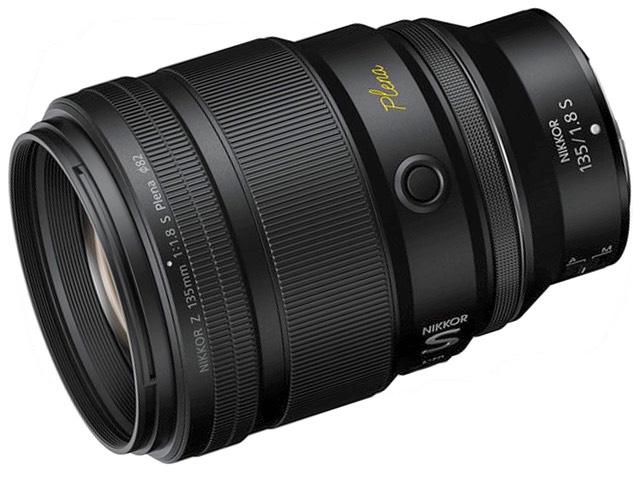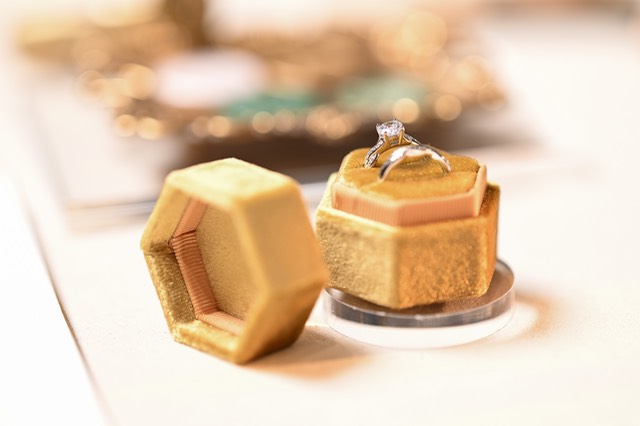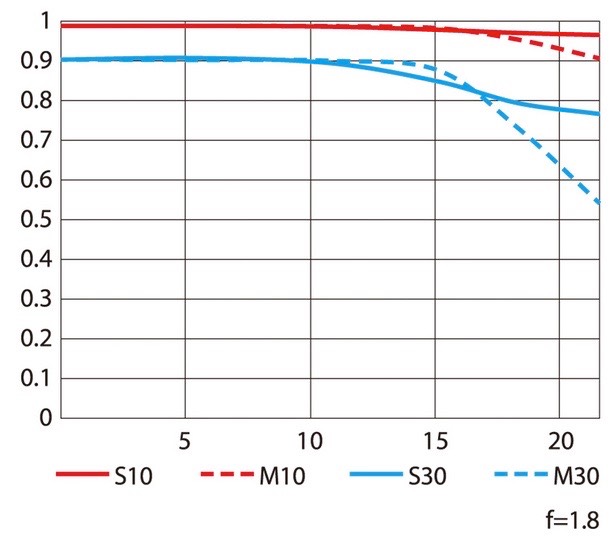
What is It?
The 135mm f/1.8 S Plena was one of those Nikkor surprises that Nikon loves to spring now and again. We had advance warning that a 135mm fast prime was being developed, we just didn’t know that this would be a special lens, not just another in the S line. The addition of the word Plena to the name was the indication that Nikon did something a little different when creating this lens.
While “plena” is a type of Puerto Rican music, Nikon’s use of the name is said to come from the word “plenum.” Specifically from the definition that says “the condition of being full, or of fullness.”
So what is the 135mm f/1.8 S Plena full of? Sharpness, edge-to-edge brightness, and beautiful bokeh anywhere in the frame. All of which derives from the optical design.
Most importantly, the image circle for this lens is larger than is absolutely necessary. Coupled with that are 16 elements in 14 groups, including an aspherical and an SR element, along with four ED elements. Those last five elements are all about trying to make all spectrum of light focus in the same place (e.g. correct spherical aberration and lateral chromatic aberration). Multiple coatings are involved, too, starting with fluorine on the front element, but also Meso and Arneo coatings internally to knock down as much internal reflection and flare as possible.
Up front, the lens uses 82mm filters and comes supplied with the HB-108 bayonet filter.
While all the above makes for a larger 135mm f/1.8 than some competing brands (at 5.5”/139.5mm in length and 35 ounces/995 grams in weight), the Plena is not outlandishly big. The build quality is the usual S-line, which means that the lens is dust and drip resistant.

Focusing is done all internally using two stepping motors, and extends down to 32” (0.82m). Maximum magnification is 1:5, which isn’t bad, but also not anywhere near the macro range.
Apertures range from the maximum f/1.8 down to the usual f/16 minimum Nikon uses for most primes. As you stop down, an 11-blade rounded aperture diaphragm is used, and on my sample this is one of the roundest ones I’ve yet gotten from Nikon.
The 135mm f/1.8 S Plena has an L-Fn button, a manual/autofocus switch, and an extra control ring in terms of extra controls, but foregoes the LED info display that some of the S-line primes have.
At US$2500, the Plena is not inexpensive. You’re paying a premium for all the goodness inside, so you’ll want to pay close attention to my section on performance, below. The lens is manufactured in Thailand.
Source of the reviewed lens: purchased
How's it Handle?
Yes the 135mm f/1.8 S Plena is a little on the large and heavy size for a prime. But I’m used to supporting telephoto lenses with my left hand, and this lens is comfortable when doing so, with the L-Fn button falling naturally where my left thumb is positioned. On the Zf, this lens will feel front heavy and I hope you added a grip for your right hand to the camera. But on the Z8 and Z9 I found the combo to be well balanced.
There’s really not much more to say. The focus ring is quite wide and easily found, should you need it. The extra control ring is where you expect it. Both are quite smooth in operation. I do wish Nikon would come up with a different pattern for the “grip” at the front of the lens, though. You can mistake that for the feel of the focus ring, though I think it would be rare you’d reach that far forward to change focus. That little extra grip etching is there to help you mount and remove the lens, as otherwise the polycarbonate outer body of the lens would be a little bit slippery for that.
How's it Perform?
Focus: If you have to ask, the 135mm f/1.8 S Plena is a bit faster to focus than the 85mm f/1.2 S. Just enough to make a difference for some, but not enough to make me consider that as a difference I need to pay attention to. I did not notice any focus shifts.
Focus breathing is definitely there on a complete closeup to infinity focus pull—a bit less than half that of the 85mm f/1.2—but at this lowish level for most focus changes you'd made during a video session I doubt you're going to notice any field size change.

Sharpness: Yeah, it probably deserves a name (Plena) in addition to numbers. I call it excellent in the center, and excellent- to the corners. Wide open. I'd judge the lens to be best somewhere in the f/4 to f/5.6 range, where it's just excellent throughout the frame. The question I quickly had from the chart results was whether this would hold up at distance. The answer is yes, it does.


Nikon's theoretical MTF for the Plena shows remarkably good contrast performance, particularly through the DX boundary (16 on the X axis).
At the minimum focus distance, you get a 1:5 magnification ratio and the lens starts to show a small bit of corner softness wide open. Call the corners good wide open at the very closest focus distance. However, the corners snap up nicely as you stop down. By f/4, the lens can be said to again be excellent from center to corner. If you're using this lens for things like wedding ring images as I showed above, I don't think you'll care, but if the absolute corners are important with the lens right at the closest focus point, stop down a bit.
The lens appears free of coma, and with really low spherical aberration. Point light sources remain points. Field curvature is also minimal.
Linear distortion: Modest pin cushion distortion that's fairly regular can be seen, and is easily corrected in camera.
Vignetting: Nikon's makes strong statements about no vignetting on this lens due to the large image circle, and it's almost true. There's a tiny difference right in the extreme corners wide open, and that's essentially gone (well within in-camera correction) at f/2.8. This lens absolutely has a wide image circle and is probably the least-vignetting prime I've encountered.
Chromatic aberration: More so than the other f/1.8 Nikkors, the 135mm f/1.8 S Plena absolutely shows longitudinal chromatic aberration, and you have to get beyond f/2.8 to wrest that under control. It's even worse than the 85mm f/1.2 S. This will show up on high contrast edges, and in the bokeh. Lateral chromatic aberration, however, is well controlled, as usual.
Flare: Probably the worst aspect of the lens: it's relatively easy to produce colored ghosting with a bright light source in the frame. Moreover, some ghosts will show prismatic effects, which really calls attention to them. On the flip side, veiling flare is actually quite good on the 135mm f/1.8 S Plena.

This is the upper right quadrant from a frame. The flame is at image center. Everything moving out to the upper right corner as it goes out of focus presents very nicely on this lens. Soft, nothing that calls itself out.
Bokeh: Another aspect of the 135mm f/1.8 S Plena that Nikon highlighted in its marketing is the bokeh. In particular, keeping shape over the entire frame. It's a win for Nikon here. The actual bokeh balls are stunningly free of edge visual impacts (see above). Even the longitudinal chromatic aberration is well controlled, with just a very faint bright outer ring. Internally, probably the most mild onion-skinning I've seen, and I had to look close and hard to see it at all. Big wins on both those things. However, circles can become slightly elliptical in the corners. That's already starting to show up at the DX boundaries, but in the corners there's also a hint of cutoff on the inner side. Nothing that could be construed as cats eye, for sure, but if you're looking for absolute circles everywhere, you'll only get those in the DX frame. The 135mm f/1.8 S Plena slots just in front of the 85mm f/1.2 S in terms of avoiding objectionable bokeh, but only by a little. Both lenses are really good in their out of focus areas.
Final Words
I originally wasn't going to pick up a 135mm f/1.8 S Plena. I was going to leave my testing of this lens for later. However, a quick sample use of it told me I needed to review this lens along with the 85mm f/1.2 S, as there would be a lot of questions about the two.
I'm glad I did. This lens is simply exceptional, and something we haven't really seen before, from anyone. It not only knocks the Sigma 135mm f/1.8 Art off the pedestal, but the pedestal is still shaking.
However, you're going to have a difficult time choosing. The 135mm is arguably sharper, has less vignetting, and doesn't have cats eyes in the bokeh. The 85mm has, to me, a more pleasing drop to out of focus (at f/1.2) and is bang on for the way way I usually do portraits (e.g. focal length). In events, I can't always get as far from the subjects that the 135mm f/1.8 S Plena would tend to require. But then, for telephoto landscape work, that extra focal length and corner goodness starts to shine.
I think which you prefer is really going to come down to subject and how far you are from them. Closer in? Get the 85mm f/1.2 S. Further away? Get the 135mm f/1.8 S Plena. Both are superlative lenses in what they can accomplish for you. Both are large and somewhat heavy, though the 135mm nets you more "reach" in about the same size package.
Highly Recommended (2023 to present)
Support this site by purchasing from the following advertiser:
